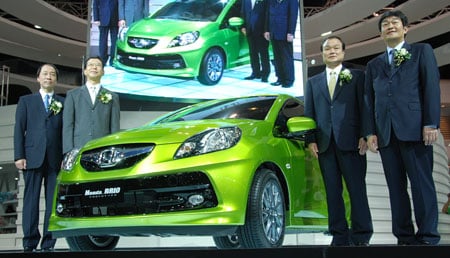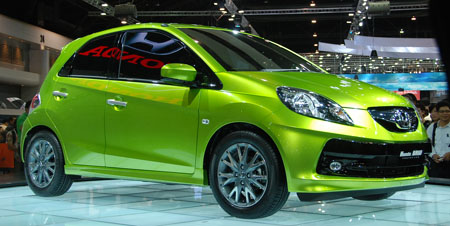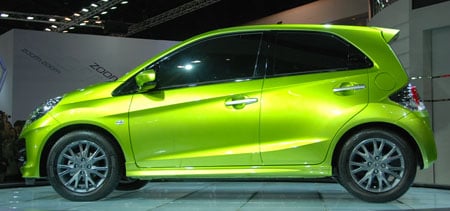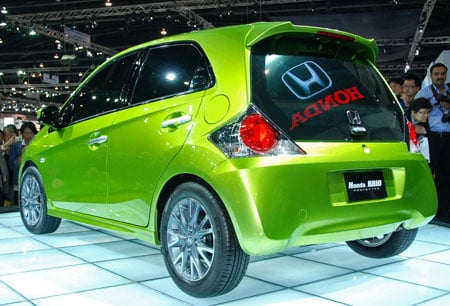
This is the Honda BRIO prototype, which is the near production version of the company’s New Small Concept that was shown earlier this year in India. It is an A-segment vehicle that’s one class smaller than the Jazz and City. Rivals will include the Suzuki Alto, Hyundai i10 and Kia Picanto, among other small cars.

The BRIO measures 3,610 mm long, 1,680 mm wide and 1,475 mm tall. That’s 45 mm longer, 85 mm wider, but 65 mm lower than a Hyundai i10. Honda did not reveal what the wheelbase is, or what engine powers the BRIO, though we’re guessing a 1.2L SOHC engine from the same family as the one in the Jazz/City. Honda needs it to achieve an average fuel consumption of less than 5 litres per 100 km (or 20 km/l) on the ECE R101 mode measurement cycle to meet Thai eco car requirements.

Thai production will begin in March 2011. India will start making the Brio in 2011 as well, with 80% local content. Although the BRIO was designed primarily for the Thai and Indian market, Honda is considering export from Thailand to the region around it, so there’s a possibility that Honda Malaysia could take up this model as an entry level to the range, something like “my first Honda”.

In Thailand, Honda targets to sell the BRIO at a starting price of approximately 400,000 baht, which is the same price as a Proton Savvy thanks to the tax breaks it gets from the Thai eco car plan, while in India the car is supposed to go 500,000 rupees onwards. How much will you pay for a BRIO in Malaysia?
Look after the jump for more images and a video of the BRIO prototype.
[zenphotopress number=999 album=1745]
[zenphotopress number=999 album=1747]
Looking to sell your car? Sell it with Carro.




















AI-generated Summary ✨
Comments on Honda's Brio focused heavily on its unattractive rear design, with many critics comparing it unfavorably to other models like Myvi, Viva, and Kia Picanto, and calling it ugly or mediocre. Some expressed disappointment about Honda’s pricing strategy, suggesting the car would be overpriced in Malaysia, possibly exceeding RM60k, which would hinder sales. Several commenters believed the car could be a popular model if priced around RM55k to RM60k, potentially challenging competitors like Myvi and Viva. There was also discussion about Honda’s inconsistent design language and the lack of a distinctive brand DNA. Overall, opinions ranged from enthusiastic for the model’s potential to harsh criticisms of its aesthetics and value, with some hoping for a lower price point to increase affordability and sales.